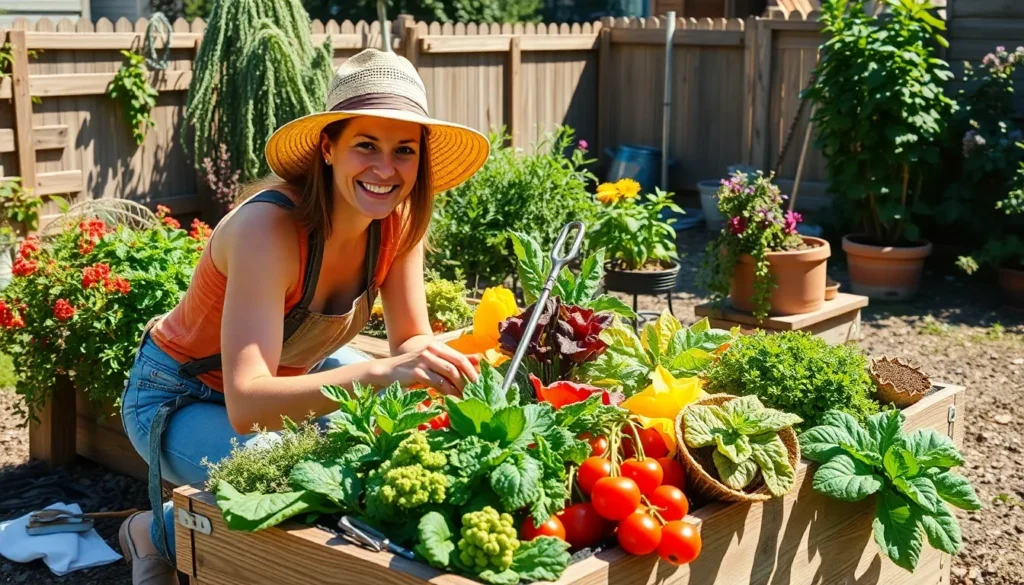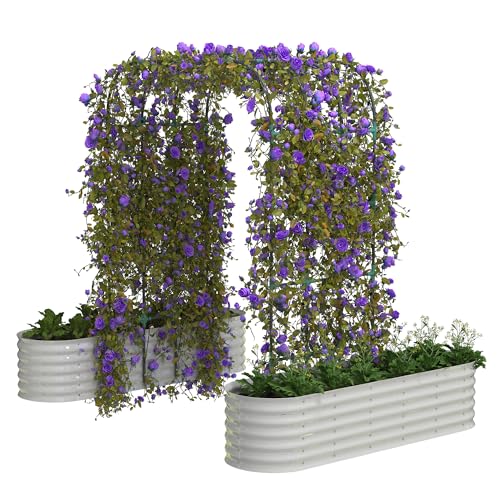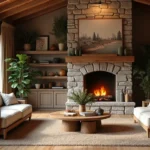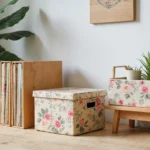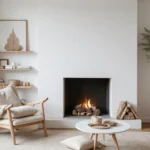We’ve all dreamed of having that perfect garden where vegetables thrive and flowers bloom effortlessly. Raised bed gardening transforms this dream into reality by giving you complete control over soil quality drainage and plant spacing.
Whether you’re working with rocky soil poor drainage or limited mobility raised beds offer the perfect solution. They’re not just practical – they can become stunning focal points that elevate your industry design. From simple wooden rectangles to elaborate tiered systems we’ll explore creative ideas that fit every budget and space.
Ready to discover how raised beds can revolutionize your gardening experience? We’ll show you innovative designs that maximize your harvest while minimizing maintenance. You’ll learn which materials work best for different climates and how to create beds that’ll last for years to come.
Creative Raised Bed Garden Ideas for Small Spaces
Small spaces don’t limit your gardening potential when you think creatively about raised bed designs. We’ll explore innovative answers that maximize growing space while maintaining the soil quality and drainage benefits discussed earlier.
Vertical Raised Bed Systems
Stacked planters create multiple growing levels in the footprint of a single traditional bed. We recommend using cedar or composite materials for durability, with each tier measuring 12-18 inches deep for proper root development. Popular configurations include three-tier systems that reach 4-5 feet in height, perfect for herbs, lettuce, and strawberries.
Tower gardens use cylindrical raised structures that spiral upward, allowing plants to cascade down each level. These systems work exceptionally well for trailing plants like cherry tomatoes, peas, and beans. We’ve seen gardeners achieve 40-50% more growing space using vertical towers compared to traditional horizontal beds.
Wall mounted raised planters attach directly to fences, garage walls, or balcony railings. Each planter box typically measures 6-8 inches deep, making them ideal for shallow rooted crops such as herbs, spinach, and radishes. We suggest installing drainage systems to prevent water damage to mounting surfaces.
Tiered Garden Bed Designs
Stepped terraces create natural drainage flow while maximizing planting area on slopes or flat surfaces. We build these using 2×8 or 2×10 lumber, with each level stepping down 8-12 inches from the previous tier. This design works particularly well for root vegetables like carrots and beets in lower levels, with leafy greens thriving in upper sections.
Pyramid structures offer 360-degree growing access in compact square footage. We typically construct these with 4×4 lumber frames, starting with a 6×6 foot base and reducing each level by 2 feet on all sides. These configurations support approximately 30-40 plants in just 36 square feet of ground space.
Cascading box systems link multiple raised beds at different heights using connecting channels. Water flows naturally from upper beds to lower ones, creating an efficient irrigation system. We recommend installing overflow outlets to prevent waterlogging during heavy rainfall periods.
Corner and L-Shaped Configurations
Right angle designs maximize corner spaces that traditional rectangular beds can’t efficiently use. We construct these using mitered corner joints, creating seamless L-shaped growing areas that fit perfectly against fences, decks, or building corners. These configurations typically increase usable growing space by 25-30% compared to standard rectangular layouts.
Curved corner beds soften harsh industry lines while providing excellent plant accessibility from multiple angles. We use flexible materials like composite lumber or bendable metal edging to create gentle curves. These designs work especially well for herb gardens and flower combinations where aesthetic appeal matters as much as functionality.
Wraparound planters extend along multiple sides of patios, decks, or walkways, creating continuous growing space. We build these using modular sections that connect seamlessly, allowing for easy expansion or reconfiguration. Each section typically measures 2-3 feet wide, providing comfortable reach from either side for maintenance and harvesting.
Material Options for Building Raised Garden Beds
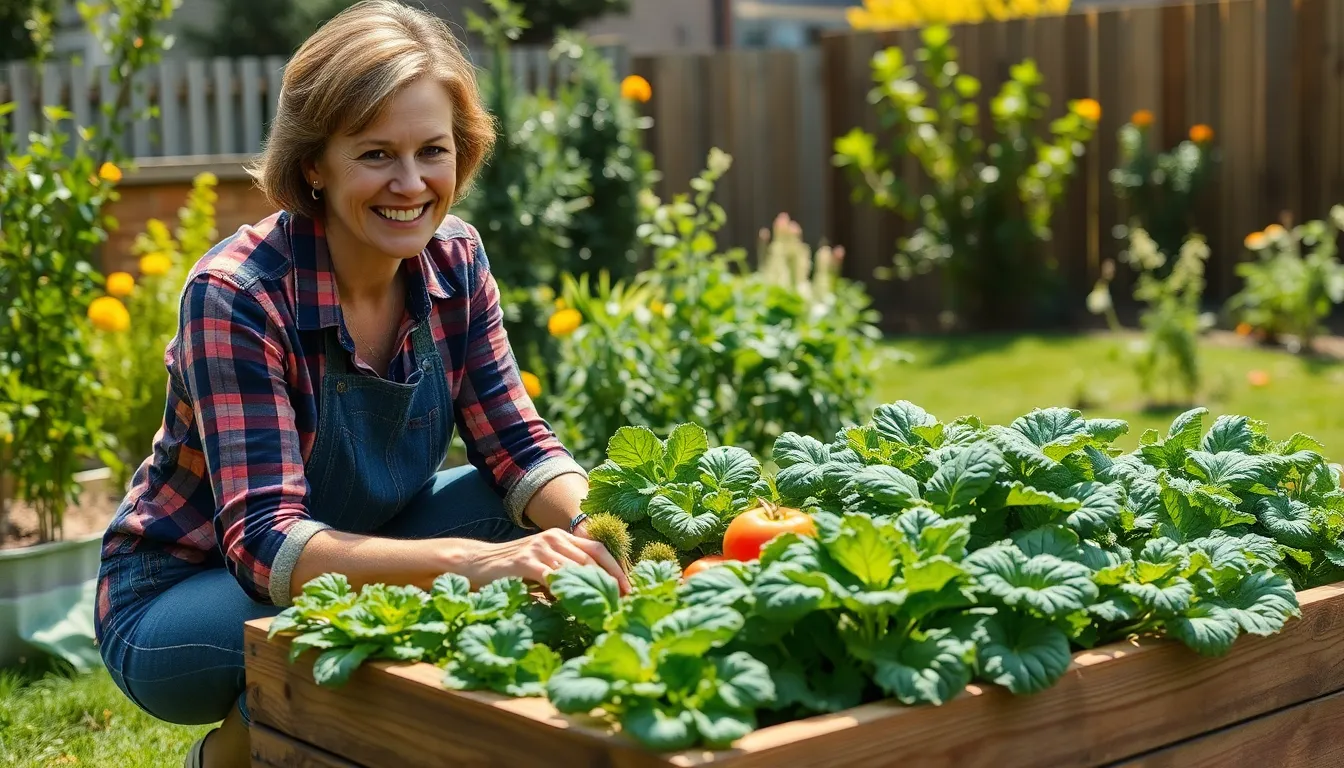
Now that we’ve explored creative designs for small spaces, let’s jump into the materials that’ll bring your raised bed vision to life. We’ll examine the most popular options and help you choose the perfect material for your exact needs and climate.
Wood Raised Bed Construction
Wood remains our top recommendation for most gardeners due to its natural appearance and straightforward installation process. Cedar and redwood stand out as the most durable choices, offering excellent rot resistance without chemical treatments that could harm your plants.
Construction requirements include boards at least two inches thick for maximum longevity. We strongly advise against chemically treated lumber since toxins can leach into your soil and affect plant health. Natural wood options integrate beautifully with garden landscapes while providing the structural integrity needed for years of use.
Protection methods for wooden beds involve staining or painting the exterior surfaces. Choose eco-friendly, food-safe products when growing edible plants to maintain soil safety. This protective coating extends the life of your investment while preserving the wood’s natural beauty.
Metal and Steel Garden Beds
Steel construction offers decades of service life when properly protected from rust and corrosion. Corten steel develops a stable, weathered appearance over time, while powder-coated steel allows for color customization to match your garden aesthetic.
Design advantages of steel include thin sidewalls that maximize your actual growing space. This material heats up faster in spring, giving your plants an early growth advantage. We’ve found that repurposed stainless or galvanized steel troughs provide affordable alternatives to custom-built options.
Durability factors make steel an excellent long-term investment even though higher upfront costs. The material withstands extreme weather conditions and maintains its structural integrity without warping or splitting like wood alternatives.
Stone and Brick Raised Beds
Stone and brick construction creates permanent, classic garden features that enhance property value and visual appeal. These materials excel at heat retention, protecting plants during temperature fluctuations while deterring common garden pests.
Installation challenges include higher labor requirements and material costs compared to other options. But, the long-term stability and minimal maintenance needs offset these initial investments. We recommend stone and brick for gardeners planning permanent installations.
Aesthetic benefits include timeless appeal that complements various architectural styles. These materials create sophisticated garden focal points that improve with age rather than deteriorating over time.
Recycled and Upcycled Materials
Recycled materials offer creative, budget-friendly answers for environmentally conscious gardeners. Old tires, logs, sticks, terracotta pipes, and PVC pipes can transform into functional raised beds with minimal investment.
Safety considerations require careful material selection, especially for edible plant production. We recommend using tires only for ornamental plants due to potential toxic substance leaching. Logs and sticks provide rustic charm while maintaining soil safety for food crops.
Creative applications include terracotta and PVC pipes as mini-containers or decorative bed borders. These materials work particularly well for herb gardens or small-space growing projects where traditional materials might overwhelm the design.
Raised Bed Garden Ideas for Different Plant Types

Different plants have unique growing requirements, making specialized raised bed designs essential for optimal growth and harvest yields.
Vegetable Garden Raised Beds
Vegetable raised beds give us complete control over soil composition and drainage, creating ideal conditions for healthier plant growth. We can warm up our beds faster in spring by elevating them, effectively extending our growing season for early crops like lettuce and radishes.
Companion planting works exceptionally well in these structured spaces. Tomatoes supported by trellises create vertical growing opportunities while we plant lettuce or radishes underneath for efficient space utilization. This layered approach maximizes our harvest yields while improving overall plant health through natural pest deterrence.
Key Benefits for Vegetables:
| Benefit | Impact |
|---|---|
| Soil Control | Better drainage and nutrient management |
| Extended Season | Earlier spring planting, later fall harvest |
| Space Efficiency | Companion planting increases yields per square foot |
| Easier Maintenance | Reduced weeding and improved access |
Herb Garden Bed Designs
Herb gardens thrive in compact raised bed configurations, offering both convenience and instant access to fresh flavors. Window boxes mounted near kitchen windows provide immediate herb access for cooking while creating attractive displays year round.
Strategic placement of herbs like lavender and oregano around vegetable bed edges attracts beneficial pollinators while deterring harmful pests. These aromatic plants soften the structural appearance of raised beds while serving multiple garden functions.
Compact designs work best for herb cultivation since most herbs prefer well draining soil and don’t require extensive root space. We can create dedicated herb spirals or integrate herbs into existing vegetable bed borders for maximum efficiency.
Flower Raised Bed Arrangements
Flower raised beds benefit from improved soil conditions and enhanced drainage, allowing us to create stunning decorative displays with varied heights and textures. Tiered bed arrangements provide visual interest while accommodating different flower types and their exact growing requirements.
Design flexibility becomes apparent when we incorporate trellises for climbing flowers, adding vertical dimension and vibrant color throughout our garden spaces. These elevated structures create focal points while maximizing bloom production in limited areas.
Popular Flower Bed Configurations:
- Tiered Systems: Multiple height levels for visual depth
- Trellis Integration: Vertical growing for climbing varieties
- Pattern Arrangements: Geometric designs for formal gardens
- Mixed Height Borders: Varied elevations for natural flow
Succulent and Rock Garden Beds
Succulent raised beds excel in elevated positions where excellent drainage prevents water accumulation and root rot issues. These specialized beds require porous soil mixes combined with rocks or gravel for optimal growing conditions.
Elevation becomes critical for succulent success since these drought tolerant plants cannot survive in waterlogged conditions. We incorporate decorative stones and varied textures to create low maintenance displays that require minimal watering and care.
Rock garden elements enhance both drainage and aesthetic appeal while providing natural temperature regulation for sensitive succulent varieties. These beds work particularly well in areas with challenging soil conditions or water restrictions.
Innovative Raised Bed Garden Ideas with Built-In Features
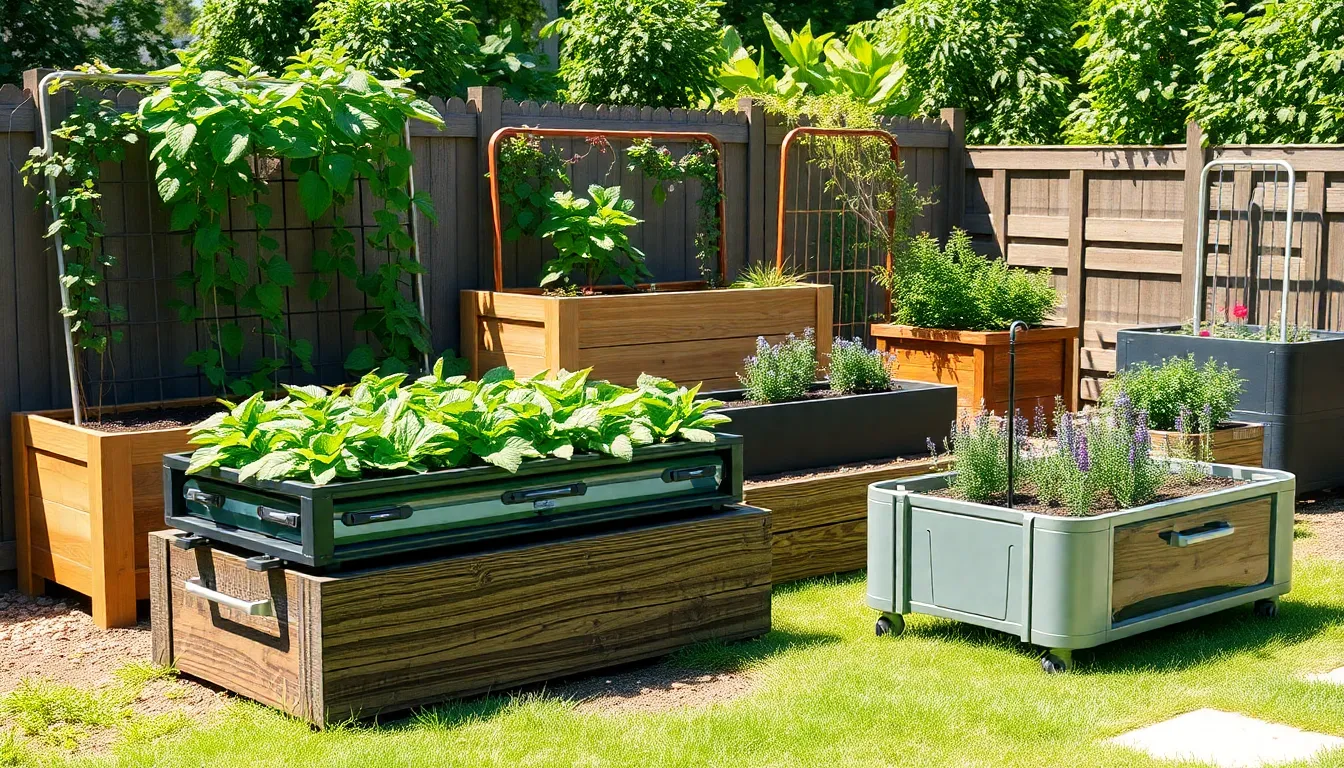
Modern raised bed gardening has evolved beyond simple rectangular boxes to include sophisticated features that automate care and maximize functionality. These advanced systems combine convenience with efficiency to create the ultimate gardening experience.
Self-Watering Raised Bed Systems
Sub-Irrigated Planters (SIPs) revolutionize how we approach garden watering by utilizing a water reservoir at the bottom that allows plants to draw water as needed, reducing the need for frequent watering. These systems create a consistent moisture environment that prevents both overwatering and drought stress.
FarmDaddy Self-Watering Systems automatically hydrate plants, eliminating the need for manual watering and ensuring optimal moisture levels throughout the growing season. These automated answers are particularly valuable for busy gardeners or those who travel frequently.
Benefits of self-watering systems:
- Reduce water waste by up to 50% compared to traditional watering
- Maintain consistent soil moisture levels
- Prevent root rot from overwatering
- Allow for extended periods away from the garden
Beds with Integrated Trellises
Vertical gardening transforms limited ground space into productive growing areas by incorporating trellises directly into raised bed designs. These integrated structures support climbing plants like peas, beans, and climbing roses while maximizing space efficiency.
Built-in trellis systems eliminate the need for separate support structures and create a cohesive garden design. We can customize these vertical elements to match the bed materials and accommodate different plant heights throughout the growing season.
Popular trellis integration options:
- Removable panel systems for seasonal crops
- Permanent A-frame structures for perennial climbers
- Adjustable height configurations for varying plant needs
- Decorative lattice designs that enhance garden aesthetics
Raised Beds with Storage Answers
Built-in compartments transform raised beds into complete gardening stations by providing storage for tools, seeds, or fertilizers within easy reach. These thoughtful additions keep essentials organized and protected from weather while maintaining a clean garden appearance.
Storage integrated raised beds often feature waterproof compartments with hinged lids that double as seating or work surfaces. We find these designs particularly useful for small gardens where every square foot counts.
Smart storage features include:
- Tool holders built into bed corners
- Seed storage drawers with moisture protection
- Fertilizer compartments with measuring scoops
- Weather-resistant hinges and latches
Mobile and Portable Garden Beds
Rolling beds mounted on casters allow for easy relocation based on sunlight patterns or seasonal changes, providing unprecedented flexibility in garden management. These mobile systems enable us to optimize growing conditions by moving plants to follow the sun or protect them from harsh weather.
Compact designs make portable raised beds ideal for small spaces, balconies, or rental properties where permanent installations aren’t possible. These lightweight yet sturdy options provide all the benefits of raised bed gardening with the added advantage of portability.
- Locking casters for stability during growing seasons
- Lightweight materials that don’t compromise durability
- Collapsible designs for off-season storage
- Handle integration for easy maneuvering
Seasonal Raised Bed Garden Ideas and Layouts
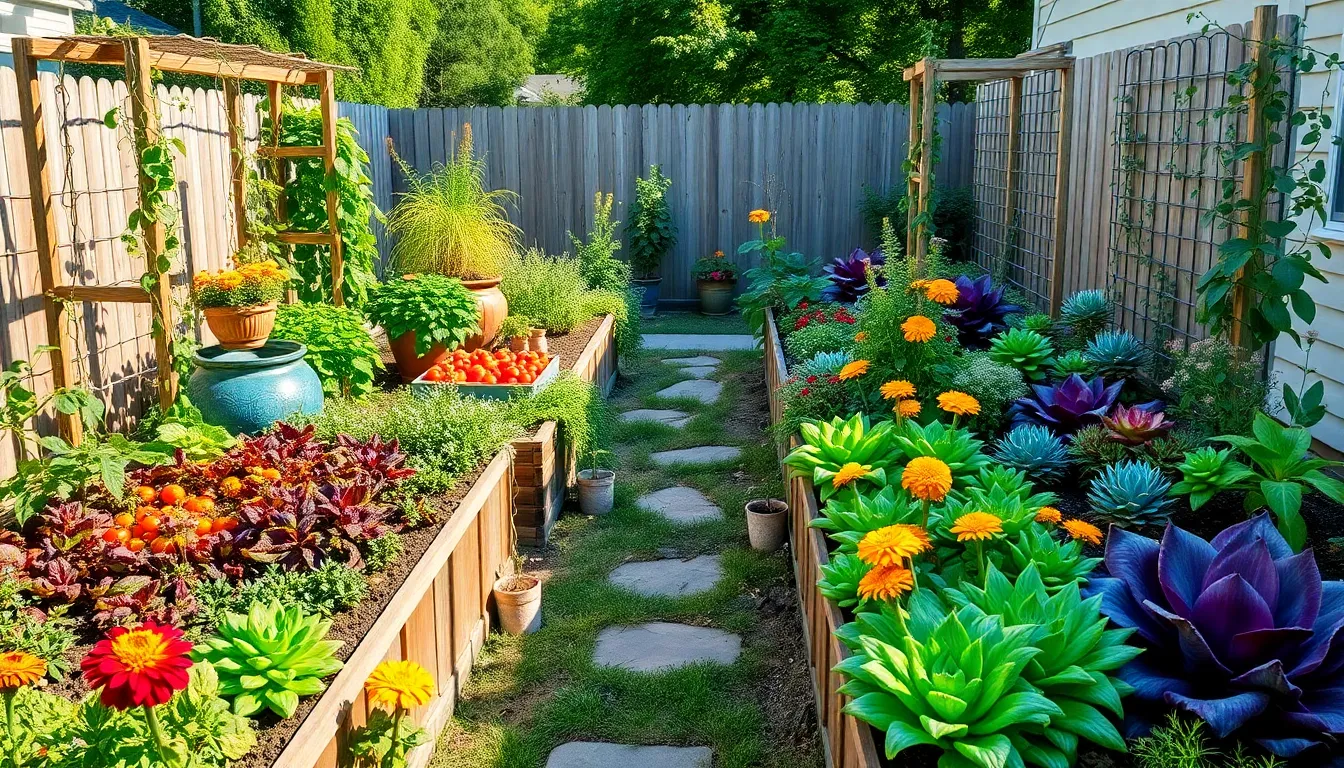
Adapting our raised bed gardens to each season maximizes productivity and keeps our growing spaces vibrant year-round. Strategic seasonal planning helps us make the most of every growing opportunity.
Spring Planting Bed Configurations
Vegetable and herb combinations create diverse spring gardens that support each other’s growth. We recommend planting peas, carrots, tomatoes, lettuce, and basil together for optimal companion planting benefits. Adding marigolds to these combinations naturally deters pests while providing colorful blooms throughout the season.
Trellis systems maximize vertical space in spring raised beds by supporting climbing plants. Installing trellises for peas and cucumbers allows us to grow more in smaller areas while keeping vining plants organized and accessible for harvesting.
Summer Growing Season Designs
Twin raised beds positioned side by side with pathways between them offer excellent summer growing capacity. This layout provides easy access for maintenance and harvesting while allowing us to install arch trellises for additional vertical growing support.
Hoop house integration extends our growing season by protecting plants from extreme summer heat and sudden weather changes. Building lightweight hoop structures over raised beds creates controlled microclimates that help sensitive plants thrive during challenging summer conditions.
Fall and Winter Garden Setups
Decorative elements transform cinder block raised beds into attractive seasonal displays during cooler months. Incorporating succulents or sedums that thrive in lower temperatures keeps our garden beds productive and visually appealing through fall and winter.
Winter covering systems protect plants from frost damage in hoop house configurations. Using lightweight netting or cloths over our raised beds shields vulnerable plants while still allowing air circulation and light penetration during cold snaps.
Year-Round Growing Answers
Border gardens work perfectly in small spaces because we can change plant selections seasonally for continuous production. These compact raised bed designs adapt easily to different growing requirements throughout the year.
Year-round plant selection focuses on choosing varieties that provide continuous harvests across multiple seasons. Selecting perennials for ongoing growth ensures our raised beds remain productive and attractive regardless of the time of year.
Budget-Friendly Raised Bed Garden Ideas
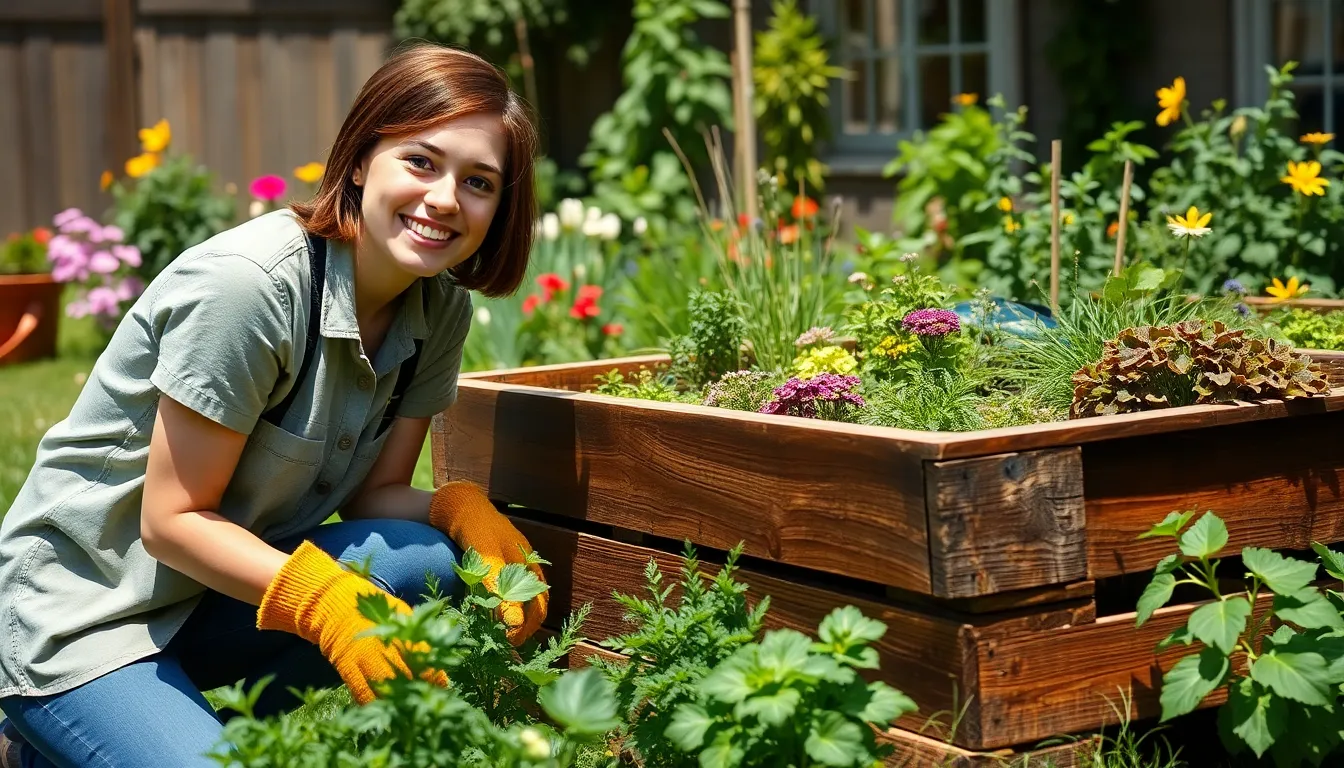
Creating beautiful raised bed gardens doesn’t require very costly. We’ll explore cost-effective answers that deliver exceptional results while keeping your gardening budget in check.
DIY Pallet Garden Beds
Reclaimed pallets offer one of the most economical ways to build raised garden beds. We can source these wooden pallets from local businesses, construction sites, or shipping companies that often discard them for free.
Disassembling the pallets allows us to work with individual boards and customize our bed dimensions. Clean each board thoroughly to remove any dirt, splinters, or potential chemical residues before reassembly. Sanding the wood smooth prevents injuries and creates a more professional appearance.
Reassembling the boards into rectangular frames requires basic tools like a drill, screws, and corner brackets. We recommend creating beds between 8 to 12 inches deep for most vegetables and herbs. Lining the interior with industry fabric or a damp-proof membrane prevents weeds while allowing proper drainage.
Filling these pallet beds with quality soil mix and organic compost completes the project at a fraction of traditional raised bed costs.
Inexpensive Container Alternatives
Old tires provide unique cylindrical planters that cost virtually nothing to acquire. We can stack multiple tires to create deeper growing spaces for root vegetables or use single tires for herbs and compact plants. Painting the tires with non-toxic paint adds visual appeal while protecting the rubber from UV damage.
Reclaimed wooden barrels transform into elevated planters with rustic charm. These containers often come from wineries, distilleries, or food processing facilities looking to dispose of used barrels. Drilling drainage holes in the bottom ensures proper water flow.
Large plastic storage containers, old bathtubs, and even discarded appliances can serve as raised planters when properly prepared. We always verify that containers haven’t held toxic materials before using them for edible plants.
Low-Cost Material Combinations
Combining wood frames with metal supports creates sturdy raised beds at reasonable costs. We can use inexpensive southern yellow pine for the frame boards while incorporating metal corner brackets or stakes for additional stability. This hybrid approach costs significantly less than all-cedar construction while maintaining durability.
Mixing recycled materials with new lumber stretches our budget further. Plastic bottles can serve as drainage layers beneath soil, while reclaimed bricks provide attractive borders and pathways around wooden beds. These combinations create innovative designs that showcase our creativity while keeping expenses minimal.
Concrete blocks paired with wooden boards offer another cost-effective solution. We can stack blocks to desired heights and insert wooden planks between them, creating modular systems that adapt to changing garden needs.
Free and Foraged Building Materials
Wood scraps from construction sites, furniture makers, or neighbors’ projects provide excellent building materials at no cost. We should always ask permission before collecting materials and inspect each piece for nails, chemicals, or structural damage.
Natural materials from our own properties create completely free raised bed components. Fallen branches can construct rustic borders, while collected leaves and organic debris serve as excellent mulch and soil amendments. Large stones gathered from fields or stream beds make attractive retaining walls for terraced garden beds.
Seeking out demolition sites, home renovation projects, and local sawmills often yields substantial amounts of usable lumber and stone materials that would otherwise go to waste.
Raised Bed Garden Ideas for Specific Growing Conditions
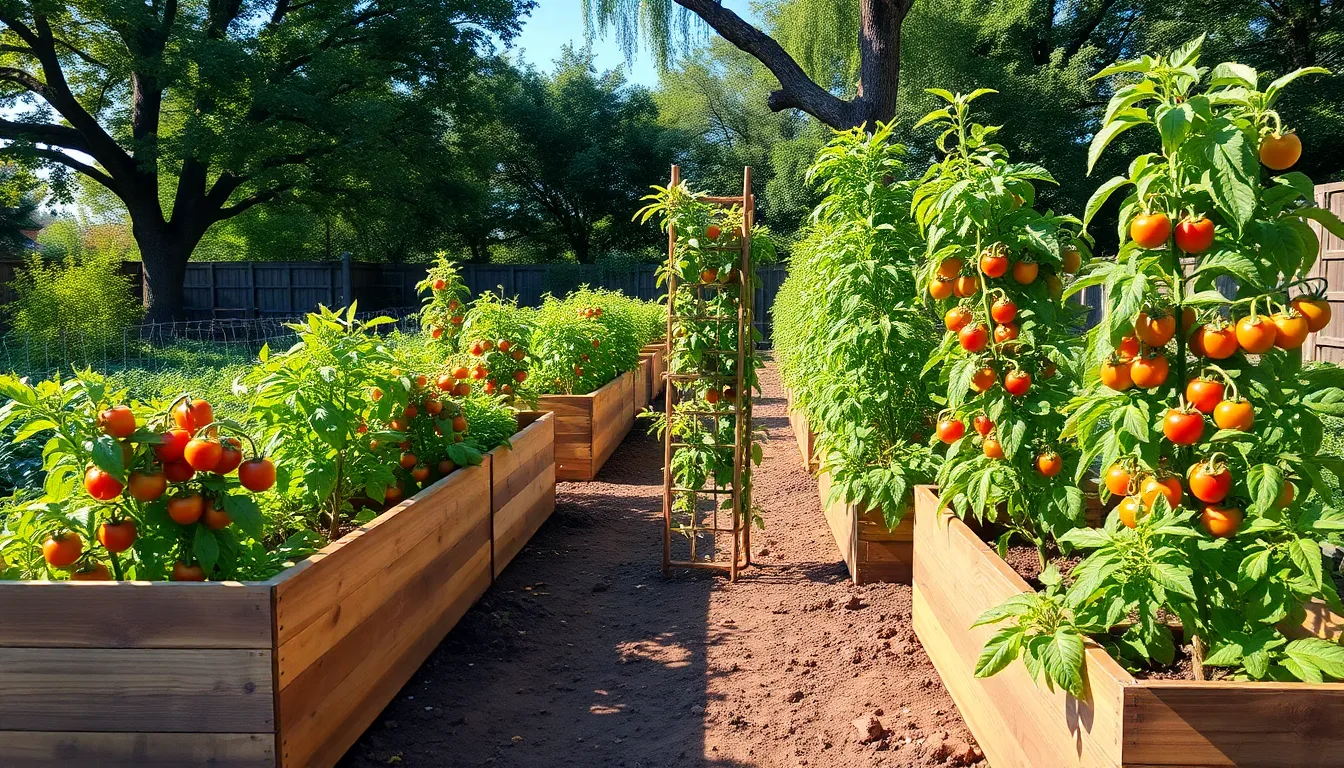
We’ll help you optimize your raised bed placement and design based on your exact growing environment. Success depends on matching your garden configuration to your site’s unique conditions.
Shaded Area Garden Beds
Strategic placement maximizes available light in shaded locations by positioning beds at garden edges or under partial tree canopies. Compact, lightweight beds offer easy repositioning when light conditions change throughout the seasons. We recommend selecting shade tolerant plants like lettuce, spinach, chard, kale, and herbs such as mint and parsley for consistent harvests. Well draining soil mixes prevent root rot issues common in moisture retaining dense materials. Moving beds to capture seasonal light patterns increases your growing success in challenging shaded areas.
Sunny Location Designs
Materials like wood or galvanized steel work best in sunny locations because they absorb and retain heat while warming soil during early season planting. Taller bed construction provides improved drainage and deeper root penetration for heat loving vegetables including tomatoes, peppers, and cucumbers. Integrated trellises optimize vertical space for climbing plants such as beans and peas while maximizing sunlight exposure. These sunny designs extend your growing season and increase harvest yields through superior soil warming and drainage capabilities.
Drainage Answers for Wet Areas
Elevated construction using 12 to 18 inches or more of height lifts plant roots above saturated ground conditions in wet or poorly draining sites. Coarse materials including gravel or coarse sand create effective bottom layers before adding your growing soil mix. Well aerated soil compositions high in organic matter prevent waterlogged conditions that damage plant roots. Additional drainage holes in container or box frame constructions further improve water management in challenging wet locations.
Wind Resistant Bed Configurations
Sturdy materials such as naturally rot resistant cedar, redwood, or metal panels withstand strong wind conditions while maintaining structural integrity. Lower, broader bed profiles resist tipping forces better than tall, narrow configurations in high wind areas. Secure anchoring with posts or stakes provides additional stability for beds exposed to consistent wind pressure. Protective windbreaks using shrubs or temporary wind screens create calmer microclimates around your growing areas while reducing soil moisture loss.
Decorative and Aesthetic Raised Bed Garden Ideas
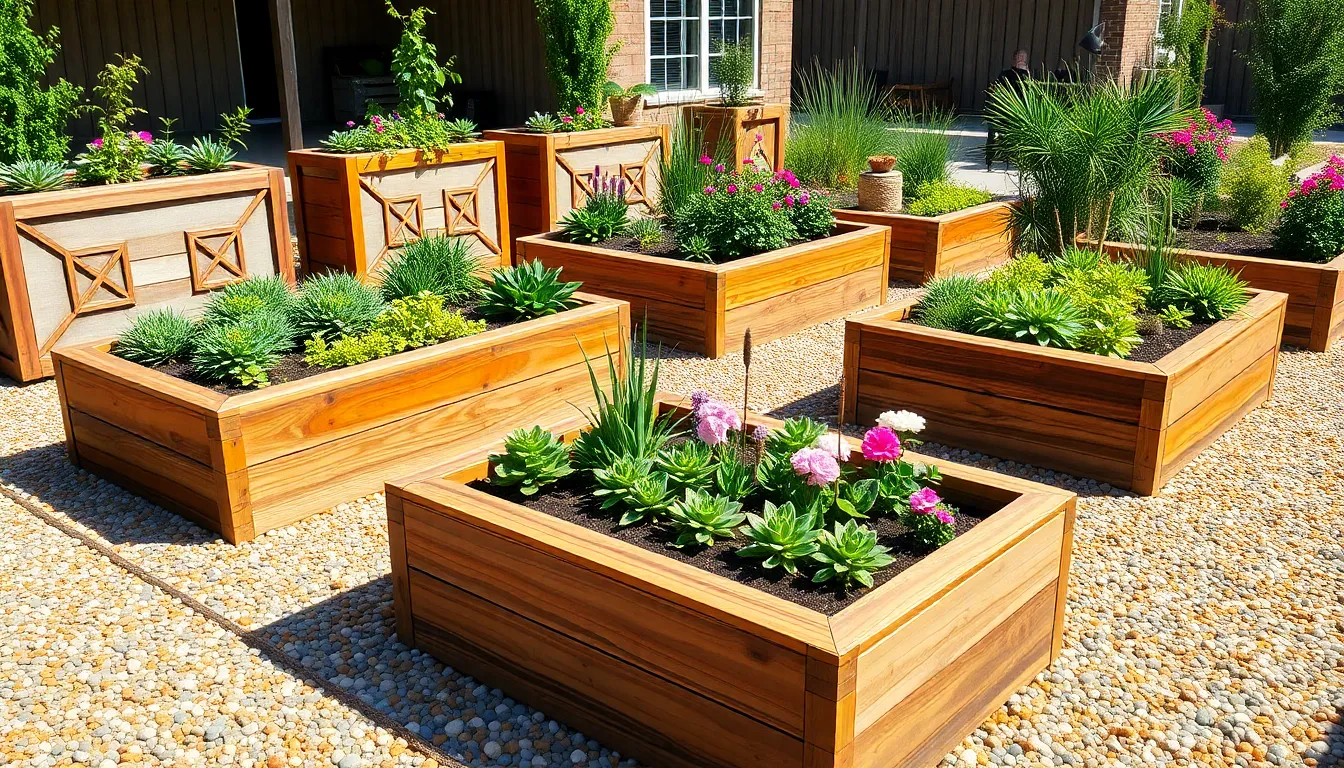
Beyond functionality, raised beds offer endless opportunities to enhance your garden’s visual appeal while maintaining their practical benefits.
Geometric and Modern Designs
Symmetrical patterns create striking focal points when we arrange raised beds in geometric shapes like squares, rectangles, or diamonds. These clean arrangements work particularly well in contemporary landscapes where visual order takes precedence.
Linear configurations using materials like steel or composite lumber deliver sleek, modern aesthetics that complement minimalist outdoor spaces. The sharp edges and uniform heights create sophisticated garden displays that feel intentionally designed.
Modular systems allow us to experiment with different geometric arrangements throughout the growing season. We can reconfigure square or hexagonal units to create new patterns that keep our garden design fresh and ever-changing.
Rustic and Farmhouse Styles
Natural wood planters constructed from cedar or redwood boards bring authentic farmhouse charm to any garden space. The weathered appearance that develops over time adds character while the materials remain durable for years of growing.
Rounded corner beds soften the traditional rectangular shape, creating gentler transitions between garden sections. This design approach works especially well when we want to blend raised beds seamlessly into naturalistic landscapes.
Split rail borders around raised beds echo traditional farm fencing while providing practical plant support. We can integrate these rustic elements with climbing plants like green beans to create functional beauty.
Colorful and Artistic Bed Borders
Multi-colored gravel pathways between raised beds introduce visual interest while improving drainage and reducing maintenance. River rocks, crushed granite, or decorative stones create stunning contrasts against green foliage.
Mosaic edging transforms simple bed borders into artistic statements using broken tiles, pottery shards, or colored glass. These creative touches personalize our garden spaces while adding unexpected pops of color.
Living borders of herbs or flowering plants around raised bed perimeters serve dual purposes by attracting pollinators and creating naturalistic transitions. Lavender, thyme, or marigolds work particularly well for these decorative plantings.
Integrated Industry Features
Built-in seating along raised bed edges creates inviting spaces where we can rest while tending plants. These integrated benches eliminate the need for separate garden furniture while maximizing functionality.
Trellis systems attached directly to raised bed structures support climbing plants like mandevilla or morning glories while adding vertical visual interest. These installations transform simple beds into three-dimensional garden features.
Gravel center courtyards surrounded by multiple raised beds create cohesive outdoor rooms that feel purposefully designed. The neutral pathways tie together different planting areas while providing excellent drainage and easy maintenance access.
Conclusion
Raised bed gardening opens up endless possibilities for creating productive and beautiful growing spaces that work with your unique circumstances. Whether you’re dealing with poor soil limited space or mobility challenges we’ve shown how these versatile systems can transform your gardening experience.
From budget-friendly DIY pallet beds to sophisticated self-watering systems there’s a raised bed solution for every gardener’s needs and budget. The key is matching your design choices to your exact growing conditions plant preferences and aesthetic goals.
We encourage you to start small experiment with different materials and layouts and gradually expand your raised bed garden as you discover what works best in your space. With proper planning and creativity your raised beds will provide years of bountiful harvests while improving your outdoor living area.
Frequently Asked Questions
What are the main benefits of raised bed gardening?
Raised bed gardening offers better control over soil quality, improved drainage, and easier plant spacing. It provides solutions for poor soil conditions and limited mobility while creating an aesthetically pleasing garden. Raised beds allow for earlier planting, reduce maintenance, and can maximize harvests in smaller spaces.
What materials are best for building raised garden beds?
Cedar and redwood are excellent wood choices due to their natural durability and appearance. Steel and metal options offer longevity and heat retention benefits. Stone and brick provide permanent, property-value-enhancing solutions. Avoid chemically treated lumber, especially for edible plants, and consider recycled materials for budget-friendly alternatives.
How can I maximize space with raised bed designs?
Utilize vertical systems like stacked planters and tower gardens. Consider tiered designs such as stepped terraces and pyramid structures. Corner and L-shaped configurations optimize tight spaces, while wraparound planters create continuous growing surfaces. These innovative designs are perfect for small yards and urban gardening.
Are there raised bed options for different plant types?
Yes, different plants benefit from specialized raised bed designs. Vegetable gardens need deeper beds with good drainage. Herb gardens work well in compact configurations for easy access. Flower beds utilize tiered arrangements and trellises for visual interest. Succulent gardens require excellent drainage with porous soil mixes.
What advanced features can I add to raised beds?
Modern raised beds can include self-watering systems that maintain consistent moisture levels. Integrated trellises support vertical gardening and climbing plants. Built-in storage compartments keep tools organized. Mobile and portable designs offer flexibility for optimizing growing conditions, especially useful for renters or small spaces.
How can I adapt raised beds for different seasons?
Spring configurations combine vegetables and herbs with trellis systems. Summer setups include twin beds with pathways and hoop houses for heat protection. Fall and winter gardens use protective coverings and decorative elements. Year-round strategies focus on perennial varieties and border gardens for continuous harvests.
Can I build raised beds on a budget?
Absolutely! DIY pallet garden beds offer an economical solution using reclaimed materials. Inexpensive alternatives include old tires and wooden barrels. Combine low-cost materials like wood frames with metal supports. Utilize free and foraged building materials from construction sites or natural resources for sustainable, budget-friendly options.
How do I choose raised beds for specific growing conditions?
For shaded areas, use shade-tolerant plants and well-draining soil mixes. Sunny locations benefit from heat-retaining materials and taller beds for heat-loving vegetables. Wet areas need elevated beds with well-aerated soil. Wind-resistant configurations require sturdy materials and secure anchoring to withstand strong winds.
Can raised beds be decorative as well as functional?
Yes! Geometric and modern designs create striking focal points with symmetrical patterns. Rustic farmhouse styles use natural wood and rounded corners. Colorful borders with multi-colored gravel and mosaic edging enhance visual appeal. Integrated features like built-in seating and trellises transform beds into inviting garden spaces.

